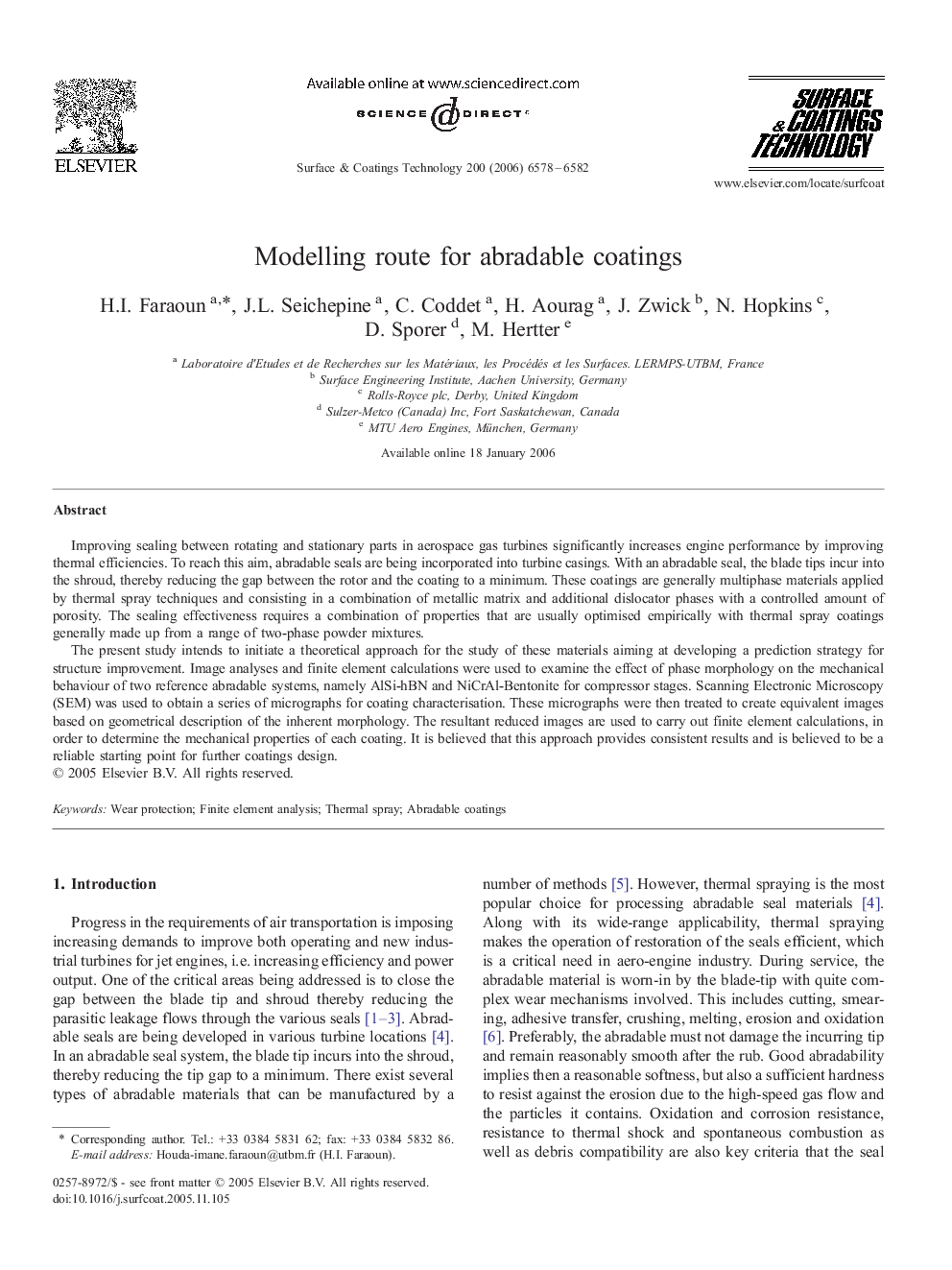| Article ID | Journal | Published Year | Pages | File Type |
|---|---|---|---|---|
| 1661962 | Surface and Coatings Technology | 2006 | 5 Pages |
Improving sealing between rotating and stationary parts in aerospace gas turbines significantly increases engine performance by improving thermal efficiencies. To reach this aim, abradable seals are being incorporated into turbine casings. With an abradable seal, the blade tips incur into the shroud, thereby reducing the gap between the rotor and the coating to a minimum. These coatings are generally multiphase materials applied by thermal spray techniques and consisting in a combination of metallic matrix and additional dislocator phases with a controlled amount of porosity. The sealing effectiveness requires a combination of properties that are usually optimised empirically with thermal spray coatings generally made up from a range of two-phase powder mixtures.The present study intends to initiate a theoretical approach for the study of these materials aiming at developing a prediction strategy for structure improvement. Image analyses and finite element calculations were used to examine the effect of phase morphology on the mechanical behaviour of two reference abradable systems, namely AlSi-hBN and NiCrAl-Bentonite for compressor stages. Scanning Electronic Microscopy (SEM) was used to obtain a series of micrographs for coating characterisation. These micrographs were then treated to create equivalent images based on geometrical description of the inherent morphology. The resultant reduced images are used to carry out finite element calculations, in order to determine the mechanical properties of each coating. It is believed that this approach provides consistent results and is believed to be a reliable starting point for further coatings design.
